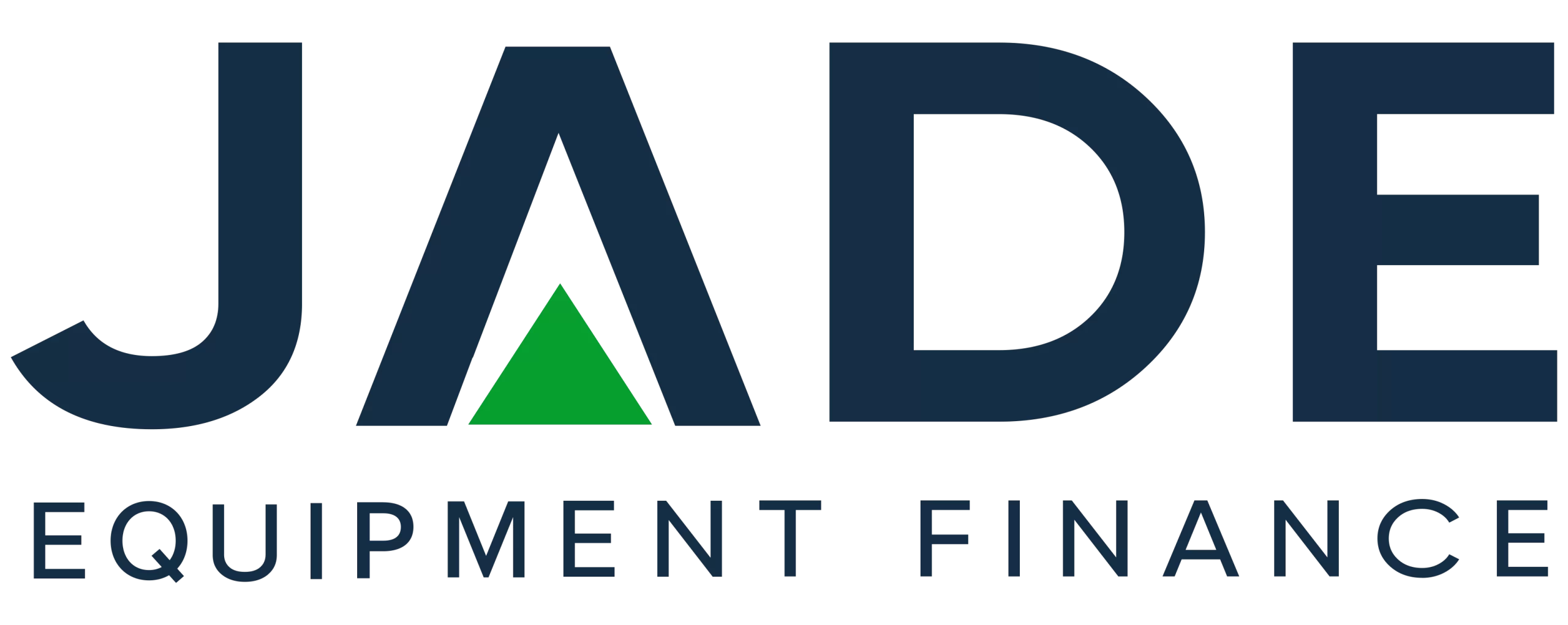Taking a broad-based view and assessment of the factors that affect economic activity can assist business in forming their own ‘finance forecasts’. Forecasts and outlooks as to what pressures their business may face in the coming years. This may be particularly useful when planning major investments in new machinery, plant and equipment and can particularly focus on interest rates and supply chains.
The current scenario is somewhat complex and far from straightforward for those trying to establish a view on the future on which to make business and investment decisions. The pandemic has created many, varied and differing scenarios, some playing out locally and some impacting as a result of global issues.
Jade Equipment Finance draws attention to a number of key economic factors which have the potential to impact interest rates on equipment finance. Factors which are playing out in both the domestic Australian economy and further afield in the wider global economy. Inflation, interest rates and supply chains are all key elements of forming finance forecasts and may assist business planning.
Timeframes
In the quest to remain competitive and gain an edge over the competition, smart business operators are always searching for the most cost-effective purchases, investments, systems and processes. That cost-effectiveness may be achieved through bargaining on purchase price or it may in the timing of the acquisition.
The timing in terms of securing equipment finance is important in relation to what equipment lending interest rates are on offer at a particular time and what the forecast is for any change in those interest rates. Specifically, if and when the rate and hence the cost of the finance will go up.
Even the smallest variation in the interest rate can end up adding a significant cost to the purchase of large items of machinery and equipment. This can easily be demonstrated by using our equipment finance calculator. Keep all values constant and vary the interest rate entered to see how much that can increase the cost of the equipment over the years of the finance term.
Interest rates are determined by a number of elements primarily by the official cash rate as set by the RBA. Australia has enjoyed historic low interest rates for what is viewed as an extended period. So much so, that some may overlook the fact that interest rates can go up. When will interest rates rise? The RBA is saying 2024. But their decision will be made based on economic data and that will depend on the outcome of multiple pressures.
Pressures on Interest Rates
Some financial analysts have been commenting for some months that the RBA should move on interest rates in response to soaring prices in the housing market. The RBA has so far held steady. Some banks have already raised their fixed interest home mortgage rates despite the RBA holding rates at the historic 0.1%
The RBA has indicated they are seeking a sustained inflation level in the 2-3% range to trigger a rate rise. The Australian economy has seen a lift in the inflation rate but not sufficient at this stage to reach the sustained target levels to trigger a RBA rate hike. Unemployment is another indicator being watched closely by the RBA. This rose significantly in the October figures. While a rise was expected, the amount was higher than most anticipated. Lower unemployment rates are required before a rate rise would be considered.
Supply chains continue to place pressure on many sectors of the economy and are seen as a potential impact to increasing inflation. Consumers have been warned of price increases in many areas as a result of the pandemic and global issues. Low supply and high demand technically can lead to higher prices as consumers compete for limited quantities.
The global scenario adds interesting twists to attempts to forecast finance. The US is experiencing surge inflation but the RBA stated in its November statement that it did not expect the Australian economy to experience the same inflation surge has is occurring in some other countries.
International shipping charges are predicted to have upward pressure on the prices of a wide range of goods and services. Ports are congested across the world and containers are even in short supply. Seemingly, post-pandemic, consumers are making up for lost time with demand soaring.
Labour shortages in Australia are also a potential impact on inflation. Border closures have kept international students out and their jobs are being hard to fill as business as reopening. Businesses are offering many tempting perks to attract staff. As the competition for the limited talent pool hots up, we could see wages growth in some sectors. The RBA views wages growth as sluggish and not expected to increase significantly in the near term.
When wages go up then prices can follow as business factor in these operational costs into their pricing structure. The inter-connection between inflation, unemployment and supply chains is significant to interest rates as they are key economic drivers.
Businesses can assess their own individual exposure to the pressures as to how these will impact their operation in terms of supply and material cost increases which could create the need to increase prices.
Avoiding Interest Rate Rises
So interest rates will eventually go up, exactly when is not known. If planning an equipment acquisition, then avoiding the additional cost of a higher interest rate could be part of the strategy.
Securing equipment finance at the current low rates, can safeguard a business from rises in lending rates in the next few years. We provide equipment finance over an up to 7 year loan term. A 7 year equipment loan taken out in 2021 would be due to be finalised in 2028. The RBA has predicted any rate rise to be in 2024. Some analysts consider it could be sooner.
Putting off a major equipment acquisition by say 2 years, could result in equipment finance at a higher interest rate. As noted earlier in this piece, even a small variation in the interest rate can add up to a significant additional cost over the say 7 year finance term.
Jade Equipment Finance secures equipment loans at fixed interest rates. Fixed interest rates on machinery and equipment finance mean the rate is locked-in for the full term of the loan. This differs from fixed interest rate home mortgages where the fixed period may be only a few years of the total mortgage term.
This is across our portfolio of equipment finance products: Rent to Own, Leasing, Chattel Mortgage and Commercial Hire Purchase. To see how our cheap interest rate refer to the interest rate comparison chart.
Planning equipment purchases based on finance forecasts can be complicated. Securing equipment finance at the cheapest interest rates is not when you engage Jade Equipment Finance to source the loan.
Contact Jade Equipment Finance on 1300 000 003 to discuss cheap interest rate equipment finance.
DISCLAIMER: IF MISINTERPRETATIONS, MISREPRESENTATION OR ERRORS EXIST IN THIS ARTICLE, NO LIABILITY IS ACCEPTED. THE INFORMATION IS PROVIDED ONLY FOR GENERAL PURPOSES AND NOT IN ANY MANNER INTENDED AS THE ONLY SOURCE FOR MAKING FINANCIAL DECISIONS. THOSE THAT CONSIDER THEY REQUIRE ADDITIONAL GUIDANCE OR ADVICE SHOULD REFER TO AN INDEPENDENT FINANCIAL ADVISOR.


